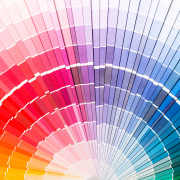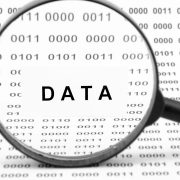4 Powerhouse Practices EVERY Direct Mail Marketer Should Know
By Marley Niesz
In my last blog post, I discussed the differences between digital and traditional print and the ways data is transforming the printing industry. This week, I would like to explore a marketing medium that continues to evolve as rapidly as print does—direct mail. One of the only things I remember from my college marketing classes is this: direct mail consistently outperforms other marketing touchpoints. Year after year, direct mail receives the highest response rates of any form of integrated marketing communications. On average, consumers keep mail for 17 days before discarding it. That’s over two weeks of brand exposure to anyone who happens to pass by or pick up your mailpiece. Can digital marketing do that? Linger for two weeks, giving you a tangible piece you can lay your hands on and leaf through at your convenience? To digital marketers, direct mail marketing may seem archaic — like a thing of the past. Actually, it is a more relevant and powerful marketing platform today than ever before. How can you harness it’s potential? Here are four direct mail practices that every marketer should know and use.
1. Personalization and Customization
According to Corporate Communications Group’s Direct Mail Infographic, the average American household receives 454 pieces of marketing mail per year. And 41% of American’s actually look forward to checking their mail every day. So how can you send distinguishable direct mail that speaks specifically to each recipient? Send them mail created just for them—personalized and customized to each person. As I mentioned in my previous blog, data is the key to variable and personalized direct mail. Simply putting a customer’s name on a piece of mail is no longer an impressive marketing feat. Research shows that 54% of consumers want to receive mail from brands that interest them with promotions that are relevant. Because of this, brands should be tracking their consumers digital footprint to better understand and anticipate their purchase intent. They can then use that data to customize and send direct mail campaigns to the same audience with exactly the product(s) or promotion(s) they were looking at online. (This is known as “retargeting” with direct mail.) Of all industries, travel and hospitality currently print the highest volume of direct mail. Using cruise lines as an example, they could easily distinguish themselves from their competition by sending a brochure detailing the exact trip the traveler was previously researching online. But, as we see on a regular basis here at CCG, personalization can be applied to all types of direct mail in all industries. Interested in how your company can refine its direct mail strategy to include personalization? Contact Corporate Communications Group today and let us help you personalize your next direct mail campaign.
2. Prospecting
Let me ask you a question. Which would you rather receive from your best friend? A generic email or a meaningful, handwritten letter? Unless you’re a robot, or perhaps a psychopath, I would assume the latter. Like a good friendship, prospecting is all about relationship building and putting in effort. High-value prospects deserve to receive a package in the mail with their name on it and a personalized message. This package could also include print samples specifically for your prospect or branded merchandise relevant to their industry. Just like general consumers, your prospects receive hundreds of mailpieces every year. It is up to you to print something memorable for them. Direct mail can cut through the noise of the digital world and allow for further engagement with prospects, in addition to whatever online channels you may be using.
3. Cross-Channel Promotion
As I was researching for this blog, I scoured a number of websites for data and information. Afterwards, I went onto Facebook to check the notifications on the Corporate Communications Group page and the first thing I saw was an advertisement for one of the websites I had just visited. I immediately recognized the brand, and now it has been in the back of my mind all afternoon. This is an example of cross-channel promotion and digital retargeting. Reaching customers across multiple platforms in a short period of time is crucial to brand recognition, sales, and customer retention. Wise marketers will incorporate direct mail into their omnichannel marketing strategy as well. Let’s analyze a scenario. I’m on the Target® website comparing makeup concealers from Brand A and Brand B. Later, I see an advertisement on google from Brand A for the exact concealer I was looking at, and I receive an email from Brand B. Two days later, I receive a post card advertising the concealer from Brand B. Statistics show that most consumers would move forward and purchase Brand B. These statistics can be found in the CCG Direct Mail Infographic. Our infographic research also taught us that 73% of American consumers prefer being contacted by brands via direct mail and 60% of catalog recipients visit the website of the company that mailed them the catalog. More touchpoints within your marketing strategy often leads to more sales. At CCG we work with our clients every day to optimize their cross-channel promotional strategy—let us do it for you too!
4. USPS Promotions
Every year, the United States Postal Service releases new promotions to help businesses save money and encourage direct mail marketing. The remaining active 2020 USPS promotions include incentives to combine direct mail with mobile shopping, a personalized color trans-promo promotion, and Informed Delivery®. The mobile shopping promotion can be used when mailing marketing mail. Through this promotion, USPS is encouraging the integration of mobile technology and mail. Any direct mail campaign that uses QR codes, other barcode formats, and app-enabled QR code payment options is eligible to receive a discount as long as the company has registered and dropped the mailpiece into the mail stream before the New Year. Another promotion is personalized color trans-promo which is for first class, presort mail only. The USPS would like companies to modernize their customer bills and statements while also promoting other products and services. Companies qualify for this promotion if they use variable color print in their transactional statements, including personalized marketing messages. This promotion also runs through the end of 2020. (Every year when the USPS announces their promotions schedule, CCG includes it in our marketing publication ENGAGE and posts it on our website.)
Finally, USPS is offering an Informed Delivery promotion through November 30, 2020 for marketing and first-class mail. Informed delivery is a program that is gaining users faster than any other USPS program, sending registrants a daily email digest showing them all letter-mail that will be arriving that day. The email consists of the scanned images of their incoming mail. But the great thing about informed delivery is the role it plays in the omnichannel strategic approach I mentioned earlier. Customers who enroll in this program receive a free, secure account with a digital mailbox that they can log into to view their mail before it is delivered to their house or they can view it in the email sent directly to their inbox. A mail campaign is eligible to receive a discount from the USPS if the mailer has registered their direct mail campaign with the USPS and provided a coordinating digital image and URL which the USPS will replace their scanned image with. When the recipient receives their email or checks their digital mailbox, they can click on the four-color image of the direct mail piece to be taken directly to a coordinating page online, providing a second touchpoint to the original piece of mail. There are already many case studies which show the value of Informed Delivery for marketers. In a case study for the Pittsburg Pirates, the organization was able to perform a split test of three complementary calls-to-action on the digital version of one mail piece. Using the Informed Delivery technology, the Pirates saw which call-to-action received the highest response rates of the three, and helped them to understand what promotions were more likely to prompt people to take action. Informed Delivery is an easy, free way for marketers to increase impressions and response rates. On the consumer side, marketers should encourage their customers to enroll in Informed Delivery as it allows customers to immediately respond to their offer digitally before receiving the mailpiece. Are you signed up for Informed Delivery? You can create your free account and sign up HERE.
In summary, direct mail is far from antiquated and still considered to be the best way to engage your customer base. Direct mail can be used in conjunction with digital trends in an effective multi-touch strategy when trying to reach prospects or current clients. Just don’t forget to get personal with personalization and take advantage of the promotions that the USPS has to offer—there’s no reason your next direct mail campaign cannot outshine the rest. Check out our Direct Mail Marketers Guide here and order your copy today!











